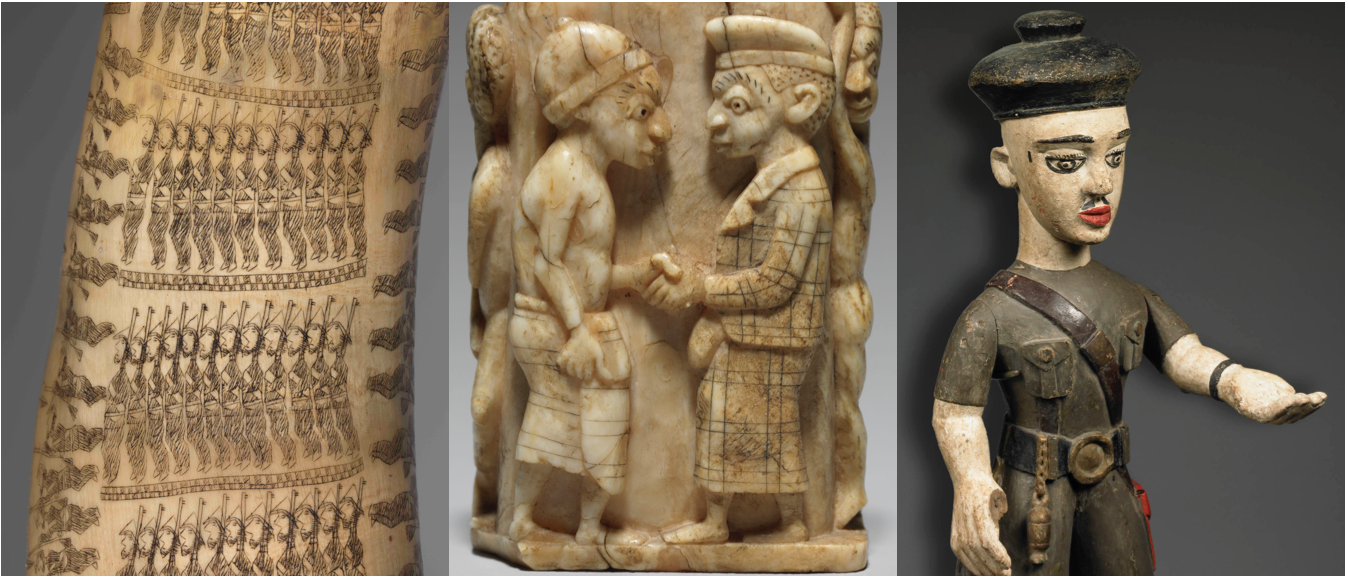Sculpture with Six Figures
Democratic Republic of the Congo, Loango, Vili
mid - late 19thCentury
Ivory
Museum purchase. 2007.18.1
From the middle of the nineteenth to the early twentieth centuries there was a strong market for work of Vili artists, who created wares to sell to travelers and export to Europe. In some cases entire tusks would have been carved with figures and scenes; in other cases small trinkets were produced as a souvenirs. This ivory sculpture is carved on all four sides and could easily fit in the pocket of a tourist. On two of the sides the artist depicts exchanges between men dressed in European clothing and a man and woman dressed in Loango attire. One side depicts an rural African trader closing a deal with an urban African, wearing elements of Scottish attire including a kilt, sporran, and a Tam o’Shanter. On the opposing side, the man in European apparel greets the woman with his hand to his chin, a Vili gesture of respect. The figures flanking the narrow sides of the ivory are not as easy to interpret. Art historian Jessica Stephenson reads the figure through a Christian lens as Adam obscuring his genitals, perhaps informed by missionaries, who would have been the primary market for such an object. The other figure is a naked man hanging from a wall, alluding to escape from slavery, which had been abolished, but was still a widespread practice.
